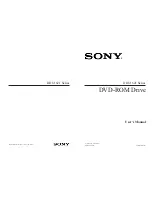
[17] Preset ref
bit 1
Same as Preset ref bit 0 [16].
[18] Preset ref
bit 2
Same as Preset ref bit 0 [16].
Preset ref. bit
2
1
0
Preset ref. 0
0
0
0
Preset ref. 1
0
0
1
Preset ref. 2
0
1
0
Preset ref. 3
0
1
1
Preset ref. 4
1
0
0
Preset ref. 5
1
0
1
Preset ref. 6
1
1
0
Preset ref. 7
1
1
1
Table 6.6 Preset Ref. Bit
[19] Freeze
ref
Freezes the actual reference which is now the
point of enable/condition for speed up and slow. If
using speed up/down, the speed change always
follows ramp 2 (
3-51 Ramp 2 Ramp-up Time
and
3-52 Ramp 2 Ramp-down Time
) in the range 0 -
parameter 3-03 Maximum Reference
.
[20] Freeze
output
Freezes the actual motor frequency (Hz), which is
now the point of enable/condition for speed up
and slow to be used. If using speed up/down, the
speed change always follows ramp 2 (
3-51 Ramp 2
Ramp-up Time
and
3-52 Ramp 2 Ramp-down Time
)
in the range 0 -
parameter 1-23 Motor Frequency
.
NOTICE!
When Freeze output is active, the
adjustable frequency drive cannot be
stopped via a low
[8] start
signal. Stop the
adjustable frequency drive via a terminal
programmed for
[2] coasting inverse
or
[3]
coast and reset, inverse
.
[21] Speed
up
If digital control of the up/down speed is desired
(motor potentiometer), select speed up and slow.
Activate this function by selecting either freeze
reference or freeze output. When speed up/down
is activated for less than 400 ms, the resulting
reference is increased/decreased by 0.1%. If Speed
up/down is activated for more than 400 ms, the
resulting reference follows the setting in ramping
up/down parameter 3-x1/3-x2.
Shut down
Catch up
Unchanged speed
0
0
Reduced by %-value
1
0
Increased by %-value
0
1
Reduced by %-value
1
1
[22] Slow
Same as
[21] Speed-up
.
[23] Set-up
select bit
0
Select set-up select bit 0 or select set-up select
bit 1 to select one of the four set-ups. Set
0-10 Active Set-up
to multi set-up.
[24] Set-up
select bit
1
(Default digital input 32): Same as
[23] Set-up
select bit 0
.
[26] Precise
stop inv.
Sends an inverted stop signal when the precise
stop function is activated in
1-83 Precise Stop
Function
.
Precise stop inverse function is available for
terminals 18 or 19.
[27] Precise
start, stop
Use when
[0] Precise ramp stop
is selected in
1-83 Precise Stop Function
.
Precise start, stop is available for terminals 18
and 19.
Precise start ensures that the rotor angle from
standing still to reference is the same for each
start (for same ramp time, same setpoint). This
is the equivalent to the precise stop where the
angle that the rotor turns from reference to
standstill is the same for each stop.
When using for
1-83 Precise Stop Function
[1] or
[2]:
The adjustable frequency drive needs a precise
stop signal before the value of
1-84 Precise Stop
Counter Value
is reached. If this value is not
supplied, the adjustable frequency drive does
not stop when the value in
1-84 Precise Stop
Counter Value
is reached.
A digital input triggers precise start, stop and is
available for terminals 18 and 19.
[28
]
Catch up
Increases reference value by percentage
(relative) set in
3-12 Catch up/slow-down value
.
[29] Slow-
down
Reduces reference value by percentage
(relative) set in
3-12 Catch up/slow-down value
.
[30] Counter
input
Precise stop function in
1-83 Precise Stop
Function
acts as counter stop or speed
compensated counter stop with or without
reset. The counter value must be set in
1-84 Precise Stop Counter Value
.
[31] Pulse
edge
triggered
Edge-triggered pulse input counts the number
of pulse flanks per sample time. This number
gives a higher resolution at high frequencies,
but is not as precise at lower frequencies. Use
this pulse principle for encoders with low
resolution (30 ppr, for example).
Pulse
Sample time
130BB463.10
Figure 6.10 Pulse vs. Sample Time
Programming
Instruction Manual
MG37A222
Danfoss A/S © Rev. 2014-02-07 All rights reserved.
67
6
6
Summary of Contents for VLT AutomationDrive FC 302
Page 2: ......















































